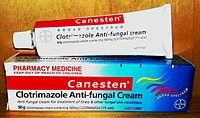
Photo from wikipedia
For many decades, Cu2+ ions have been used as fungicides in agriculture. However, the accumulation of Cu2+ ions in the soil ecosystem will be disadvantage for environment. Thus, the substitution… Click to show full abstract
For many decades, Cu2+ ions have been used as fungicides in agriculture. However, the accumulation of Cu2+ ions in the soil ecosystem will be disadvantage for environment. Thus, the substitution of copper nanoparticles for Cu2+ ion is necessary to develop long-term efficient, eco-friendly, and cost-effective fungicides. In this study, the copper nanoparticles were synthesized by chemical reduction method of Cu2+ with reductive agent of NaHB4 in chitosan stabilizer. Characterizations of copper nanoparticles were determined by UV-Vis spectra, Fourier transform infrared spectroscopy, X ray diffraction patterns and Transmission Electron Microscopy images. The antifungal efficacy of CuNPs was evaluated by testing against Fusarium oxysporum fungi at various concentrations from 20 -100 ppm. The results revealed that copper nanoparticles samples inhibited significantly the growth of Fusarium oxysporum and the smaller diameter is, the higher antifungal efficacy is. The copper nanoparticles with 26.5 nm expressed an antifungal efficacy is higher than copper nanoparticles with 29 nm. The complete inhibition was observed at concentrations 80 ppm after 1 day and even 7 days of incubation for 2.0 CuNPs (26.5 nm) sample while fungi still survive on PDA plates containing 1.5 CuNPs (29 nm).
Journal Title: Materials Research Express
Year Published: 2023
Link to full text (if available)
Share on Social Media: Sign Up to like & get
recommendations!